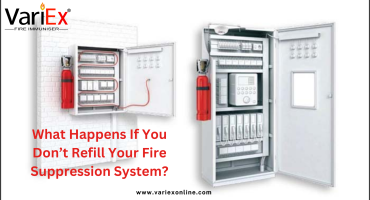![]()
Fire Immuniser
+91-7829629111
Email: info@variex.in
Varistor Technologies Pvt. Ltd.
Block-1, First Floor, Ardente Office One, Hoodi Circle, ITPL Main Road, Bengaluru, Karnataka 560048, IN
How To Test Fire Alarm On Ship
How To Test Fire Alarm On Ship
In the maritime industry, adhering to safety procedures and systems is paramount. One critical component of these safety systems is the fire alarm system on a ship. It is designed to notify the ship's crew quickly about a potential fire onboard, enabling swift responses to prevent catastrophic incidents. However, a fire alarm is only as good as its ability to function effectively. Therefore, it is crucial to conduct regular testing to ensure the fire alarm system's reliability.
In this article, we will discuss many different reasons why testing a fire alarm on a ship is imperative, outline the correct procedure, and highlight common issues that might arise and how to address them. Armed with this knowledge, you will be better informed and ready to ensure the safety and protection of your vessel and all who set sail in it.
 The Importance of Testing Fire Alarms
The Importance of Testing Fire Alarms
The imperative need to conduct regular tests on the fire alarm system cannot be overstressed. A non-functioning fire alarm can lead to severe disasters that could cost lives and significant resources. The primary purposes for testing the fire alarm include ensuring it works correctly, detecting flaws in the system early, confirming that audible and visual alerts are adequate, ensuring the system is rationally designed to cover the entire ship, and verifying whether the alarms can quickly be silenced and reset after being activated.
Frequency of Testing
The frequency of testing a fire alarm varies from ship to ship, typically depending on its size, complexity, and regulations from maritime authorities. As a general rule, weekly testing is recommended. More extensive tests, like full-scale drills, should be conducted monthly or in compliance with the relevant maritime legislation. By regularly testing the system, faults can be identified early for immediate rectification, bolstering the crew's confidence for their safety onboard.
Preparation for The Fire Alarm Test
Before initiating the test, it's essential to inform all crew members about the upcoming procedure to avoid panic. If the vessel is docked, the port authorities should also be notified to prevent any unnecessary alarm. Ensure that the instruction manual of the fire alarm system is available and understood by the person conducting the test. Additionally, have a method of documenting the results of the test in place. This documentation can be useful for inspecting bodies or insurance purposes.
Steps To Conduct a Fire Alarm Test on a Ship
The process of testing a fire alarm system is relatively straightforward. However, it should be conducted with great attention to detail. The following steps outline the procedure in a clear and concise manner:
1. Begin by activating the fire alarm through the manual call point. This is usually a red box located in various strategic points throughout the vessel.
2. Check that the fire alarm control panel recognises the manual call point’s activation and displays the correct location.
3. Listen for the audible alarm and observe the visual indicators to ensure they are functional and adequately effective.
4. Reset the alarm using the control panel. Observe how quickly and easily the system can be silenced and returned to normal status.
5. Test all other manual call points and detectors using the same procedure to ensure full coverage across the ship.
By following these steps, you can quickly identify any anomalies in the system and dispatch the relevant procedures to remedy them.
Identifying and Handling Issues
During testing, various issues might arise. These could range from unresponsive alarm points to ineffective visual or audio signals. If such problems occur, the fire detection system’s troubleshooting guide could be used to diagnose and potentially fix the problem. However, if the issue persists, it would be best to consult a professional technician or the alarm manufacturer's support team.
In some cases, the problem might be series-based, where a single fault could make the entire sequence fail. Therefore, individual testing of each component becomes crucial. Finally, the ship's layout and structure might cause blind spots in the fire detection system, necessitating redesigning or planning more detectors or sensors.
Conclusion
The safety of a ship's crew, passengers, and cargo significantly rests on the reliability of the fire alarm system. Regular tests not only ensure that these systems are functioning correctly, but these inspections also reaffirm the readiness to tackle potential fire hazards. By understanding and implementing the procedures outlined in this article, ship operators can make considerable strides in promoting safety at sea, thereby protecting lives and resources. Remember, a properly functioning fire alarm system is not just an industry regulation—it's an essential armor against unpredictable accidents.
Final Say
At VariEx.in and VariexOnline.com, we specialize in supplying and installing top-quality fire fighting systems and equipment. From fire extinguishers to advanced suppression systems, we offer comprehensive solutions tailored to your needs. Our experienced team ensures precise installation and maintenance for optimal safety.
Trust VariEx for reliable fire protection. Contact us online or call 7829629111 to learn more.
"WHAT YOU CAN READ NEXT"
 Read more +24 November 2023 in Fire Extinguisher
Read more +24 November 2023 in Fire ExtinguisherWhat types of fire extinguishers are available for different fire classes?
 Read more +11 April 2025 in Fire Suppression
Read more +11 April 2025 in Fire Suppression






